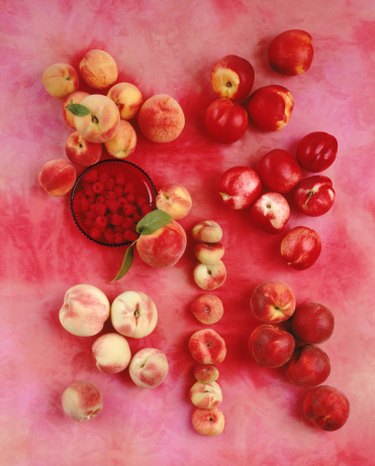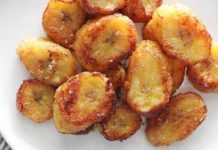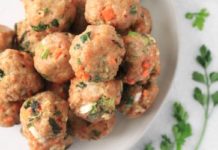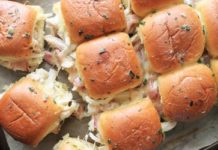 The main difference between a peach and a nectarine is the skin.
The main difference between a peach and a nectarine is the skin.
Many people mistakenly believe that peaches and nectarines are two different types of fruit. However, the only genetic difference between peaches and nectarines is a single recessive gene. A tree that receives the recessive "g" gene from both parents results in nectarines. A tree that receives two dominant "G" genes or one dominant "G" gene and one recessive "g" gene results in peaches. The genetic difference between peaches and nectarines is evident in their different skins. There are also some general differences in size, taste and nutrient content.
Video of the Day
Skin
The only constant difference between peaches and nectarines is the skin. Peaches have short and thin hairs covering their skin. Some people prefer to peel or scrape the fuzz off before eating them. Nectarines have smooth skin without any hairs. Both peaches and nectarines can have either yellow or white flesh underneath.
Size and Sweetness
Nectarines tend to be smaller and sweeter than peaches. Nectarines have a more fragrant aroma and tart flavor. Peaches and nectarines are best if allowed to ripen on the tree but most growers pick them before they ripen to avoid bruising and diseases. Nectarines are especially susceptible to diseases such as brown rot and bacterial spot. For the best flavor, both fruits should be left to ripen for a few days at room temperature after purchase.
Nutrients
Peaches and nectarines are healthy snacks low in fat and packed with nutrients. Peaches provide vitamin A, vitamin C, potassium and fiber. Nectarines provide even more health benefits. They have a slightly higher content of vitamin C, twice the vitamin A and much more potassium. Consumers wanting healthier choices should purchase canned peaches and nectarines that have been packed in their own juices with no added sugar.
Varieties
There are hundreds of peach and nectarine varieties, all of which can be categorized as either freestones or clingstones. Freestone peaches and nectarines have flesh that separates easily from the pit. Clingstone peaches and nectarines have flesh that clings to the pit. The Harbinger and Belle of Georgia are freestone peach varieties. The Harbinger ripens very early, has yellow flesh and is medium sized. The Belle of Georgia ripens late in the season, has white flesh and is large. Nectarine varieties include the Independence, a large clingstone with yellow flesh that ripens early, and the Fantasia, a large freestone with yellow flesh that ripens late.










































